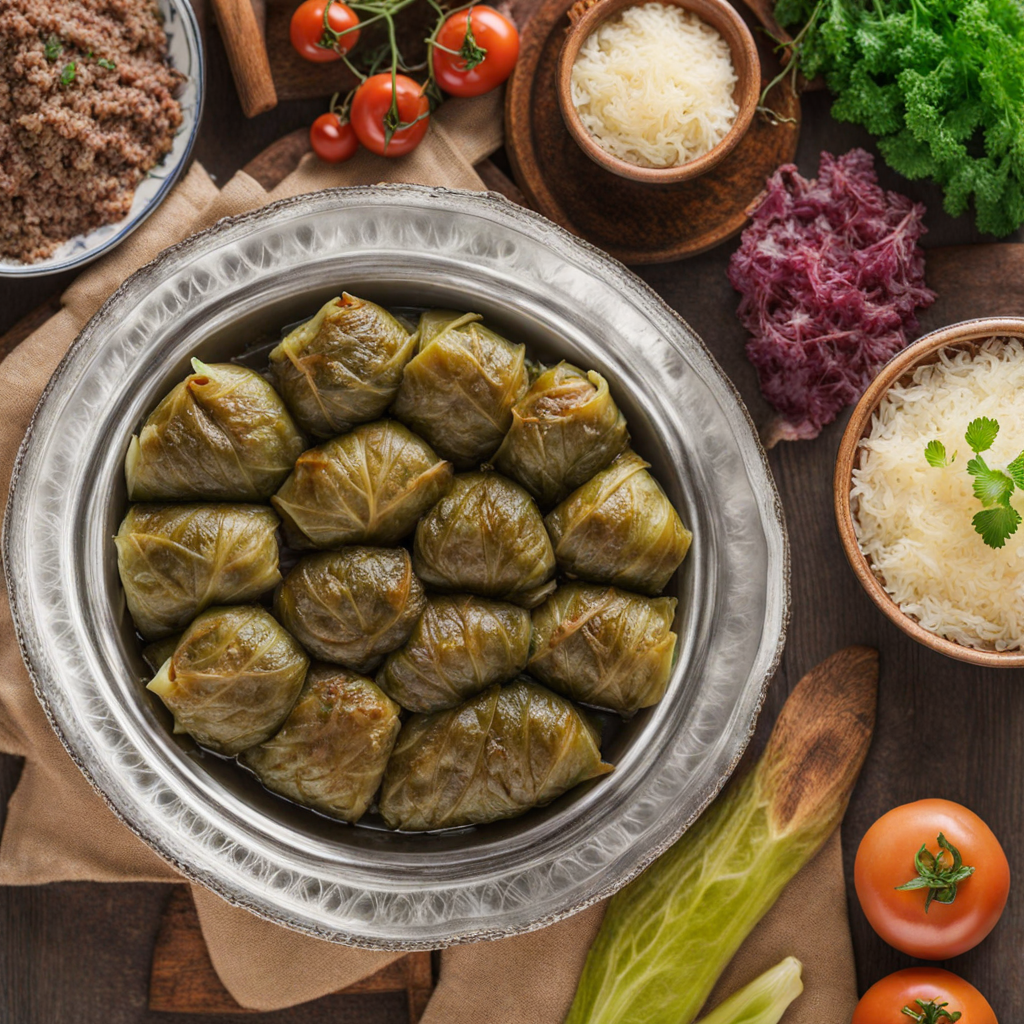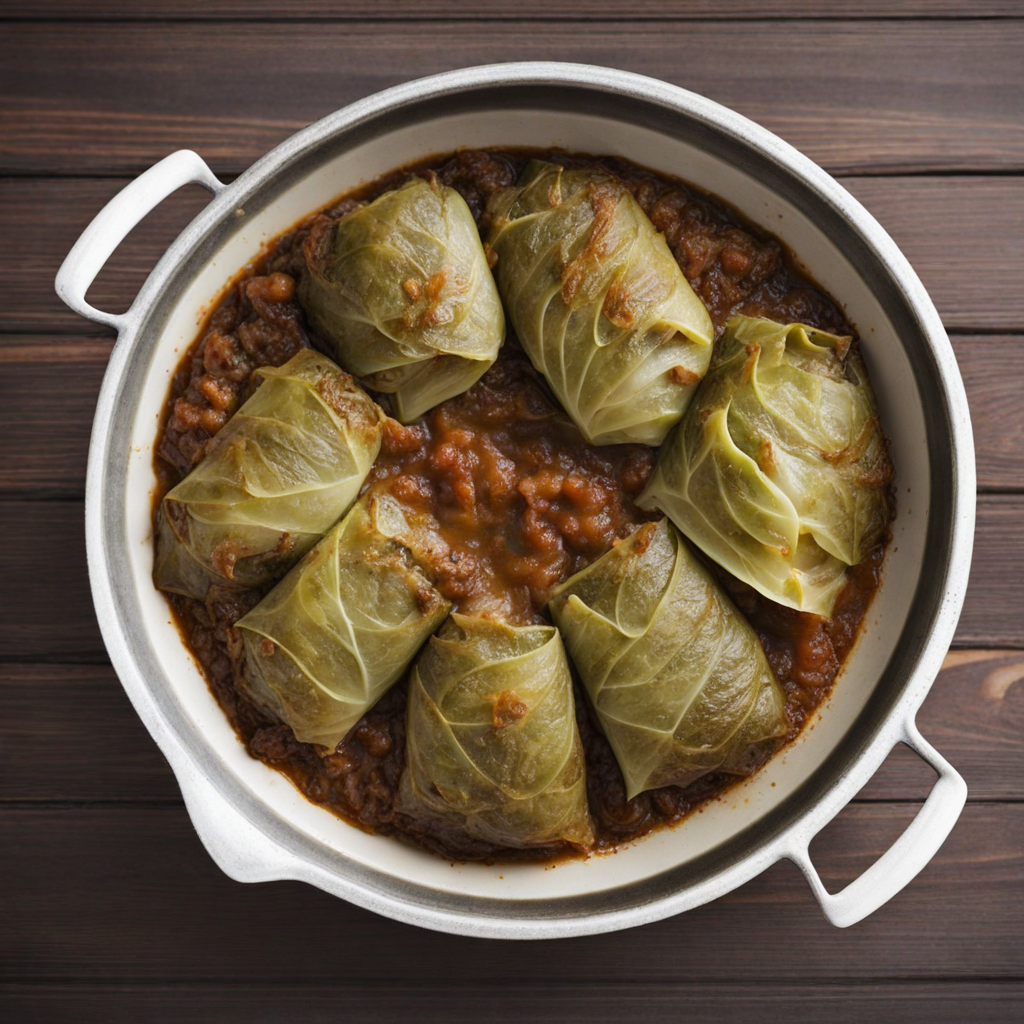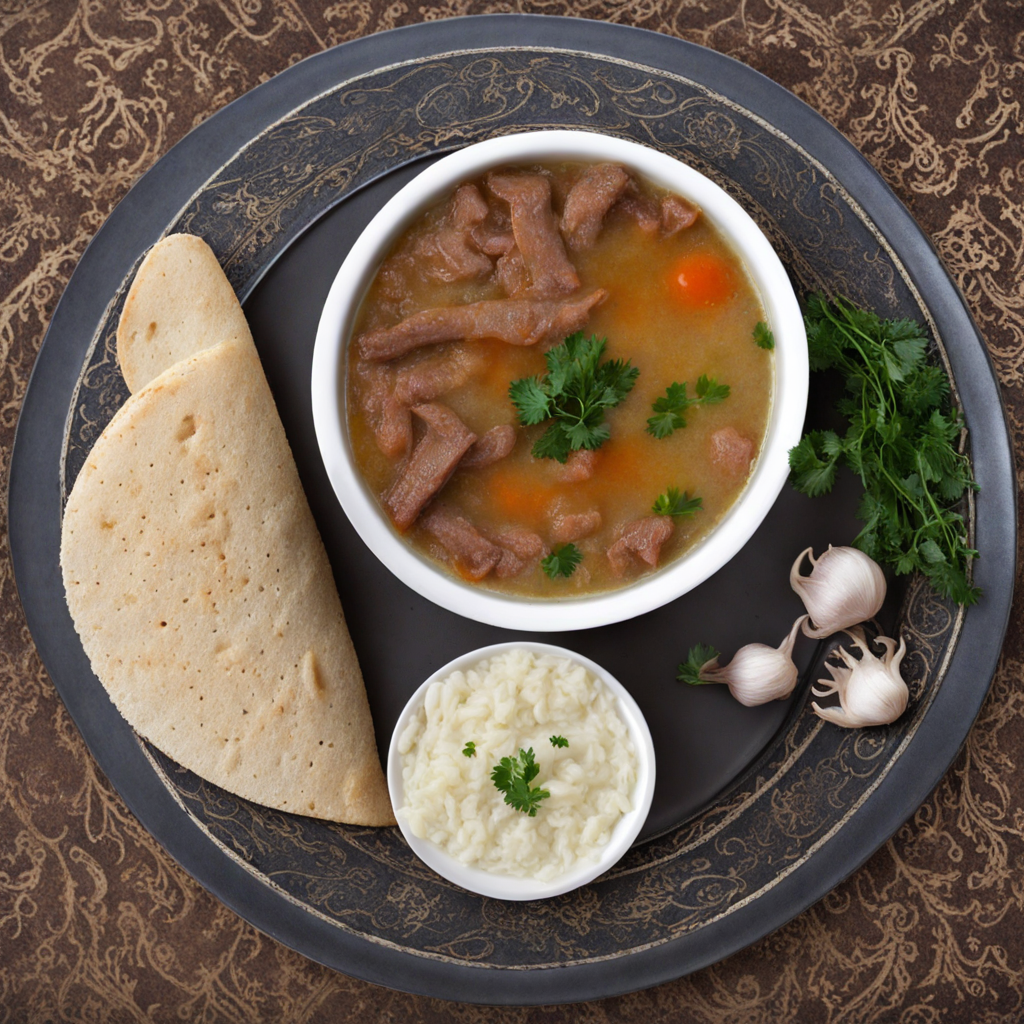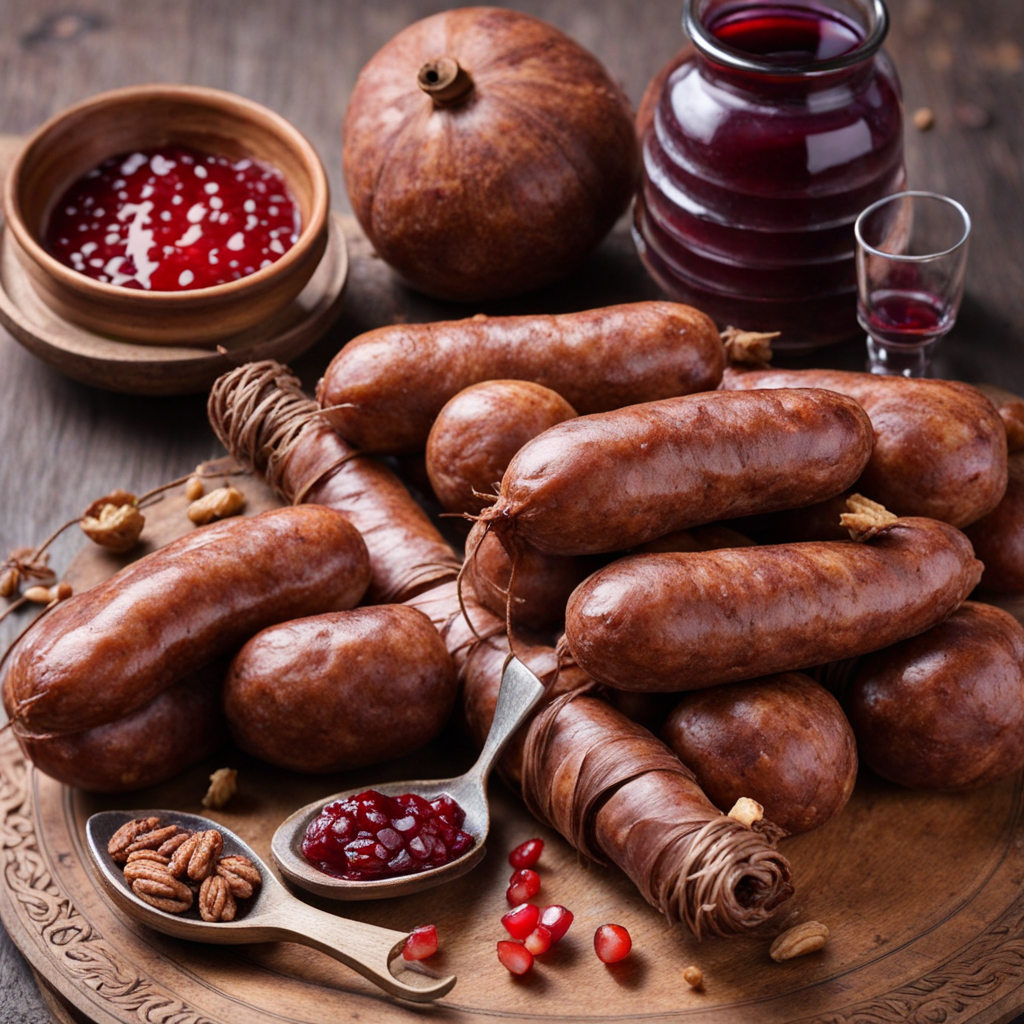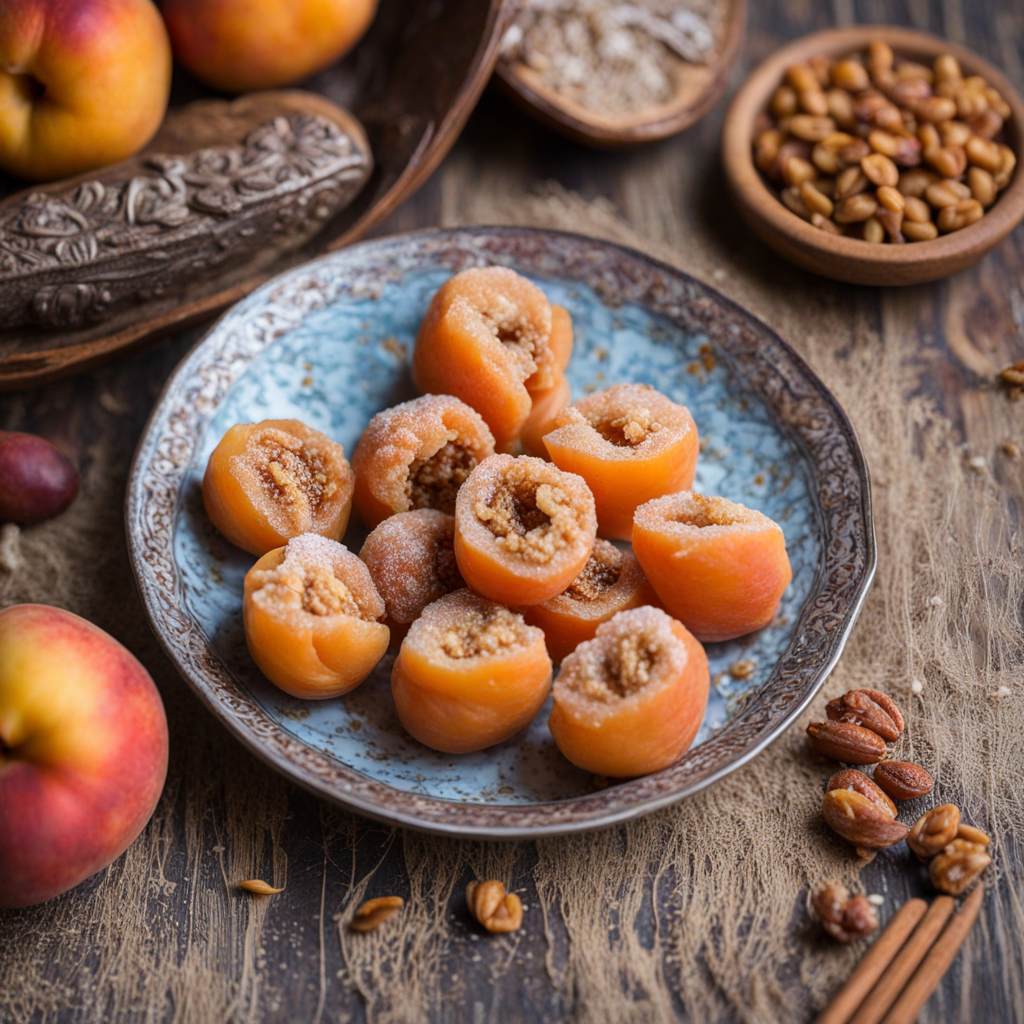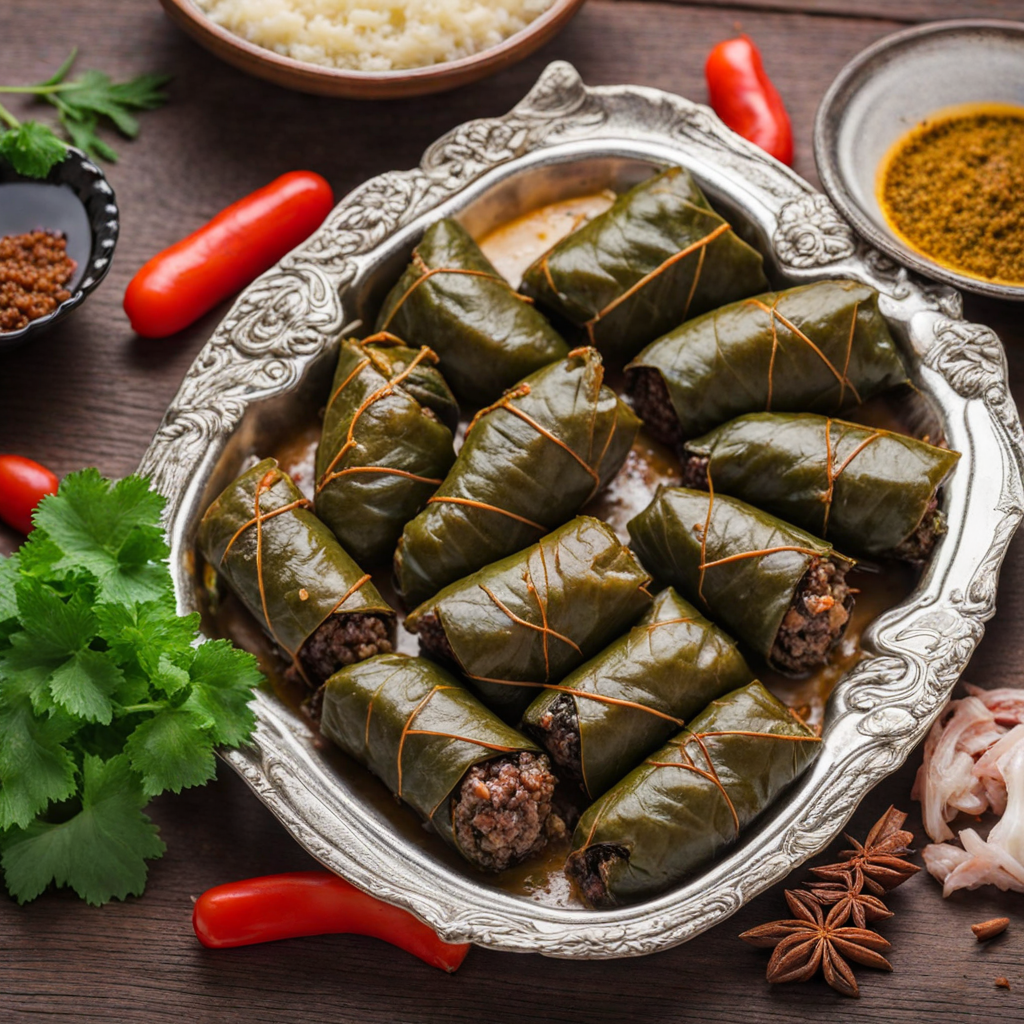Tolma
Tolma is a delightful Armenian dish that showcases the rich culinary traditions of the region. At its core, tolma consists of grape leaves stuffed with a savory mixture of minced meat, typically lamb or beef, combined with rice, fresh herbs, and aromatic spices. The filling is seasoned with ingredients like parsley, dill, and sometimes a hint of cinnamon, which adds a unique depth of flavor. The grape leaves, tender and slightly tangy, provide a perfect balance to the hearty filling, creating a dish that is both satisfying and refreshing. In addition to grape leaves, tolma can also be made using other vegetables such as bell peppers, zucchini, or eggplant, each offering their own distinct taste and texture. The vegetables are hollowed out and filled with the same flavorful mixture, then cooked until tender. This versatility not only caters to different palates but also allows for a vibrant presentation, making tolma a feast for the eyes as well as the taste buds. The cooking process often involves simmering the stuffed leaves or vegetables in a tangy tomato sauce or broth, which infuses the dish with additional flavors and moisture. Tolma is typically served warm, sometimes garnished with a dollop of yogurt or sour cream on the side, adding a creamy contrast to the spiced filling. Enjoying tolma is a communal experience, often shared among family and friends, making it a beloved staple in Armenian cuisine that invites everyone to savor its deliciousness together.
How It Became This Dish
Origin of Թոլմա Թոլմա, or Tolma, is a traditional Armenian dish that showcases the rich culinary heritage of Armenia. Its roots can be traced back to ancient times, when the practice of stuffing vegetables with various fillings became a common culinary technique across many cultures in the region. The name itself comes from the Turkish word "dolma," which means "stuffed." This dish is believed to have originated from the nomadic lifestyle of the Armenians, who often utilized available resources to create nourishing meals. The art of preparing Tolma involves wrapping a filling—typically a mixture of minced meat, rice, herbs, and spices—in grape leaves, cabbage leaves, or other vegetables. The use of grape leaves is particularly significant in Armenian cuisine, as grapes have been cultivated in the region for thousands of years. The fertile soil and favorable climate of the Armenian Highlands contributed to a rich agricultural tradition. The practice of using grape leaves to encase fillings likely developed as a means of preserving the ingredients and enhancing their flavors through slow cooking. \n Cultural Significance In Armenian culture, Tolma is more than just a dish; it serves as a symbol of hospitality and community. Traditionally, it is prepared for special occasions, family gatherings, and festive celebrations such as weddings and holidays. The act of making Tolma often brings families together, reinforcing bonds through the sharing of recipes and techniques passed down through generations. Each family may have its own variation, reflecting personal tastes and regional influences. During significant events like the Armenian New Year (Nawruz) and Christmas, Tolma is often featured prominently on the dining table, signifying abundance and good fortune for the coming year. The dish also holds a place in the collective memory of the Armenian people, especially among the diaspora. It serves as a connection to their homeland, evoking nostalgia and a sense of identity for Armenians living abroad. The preparation of Tolma often becomes a cherished ritual, a way to keep traditions alive and maintain a link to their cultural heritage. \n Regional Variations As with many traditional dishes, the preparation of Tolma has evolved and adapted over time, leading to a variety of regional interpretations. In Armenia, the most common style involves grape leaves, but other variations include the use of cabbage, zucchini, and even eggplant. Each vegetable brings its own unique flavor and texture to the dish, showcasing the versatility of Tolma. In the regions surrounding Armenia, such as Turkey, Lebanon, and Iran, Tolma has taken on different forms. In Turkey, for example, the dish is often prepared with a tomato-based sauce, giving it a distinct flavor profile. In Lebanon, a version called "warak enab" specifically refers to grape leaves stuffed with rice and meat, seasoned with spices like allspice and cinnamon. This cross-cultural exchange highlights the interconnectedness of cuisines in the region and how they influence one another over time. \n Modern Adaptations In recent years, Tolma has made its way into modern culinary scenes, both in Armenia and abroad. Chefs are experimenting with the traditional recipe, incorporating contemporary ingredients and techniques. Vegan and vegetarian versions of Tolma have gained popularity, substituting meat with lentils, beans, and a medley of vegetables. This adaptation reflects a growing awareness of dietary preferences and health-conscious eating. Moreover, Tolma has found its place in gourmet restaurants, where chefs have reimagined the dish for a more upscale dining experience. These modern interpretations often involve artistic presentations and innovative flavors, allowing Tolma to transcend its humble origins and appeal to a broader audience. This evolution of the dish serves to keep its legacy alive, ensuring that it remains relevant in today's culinary landscape. \n Conclusion: A Dish of Resilience The history of Tolma is a testament to the resilience and adaptability of Armenian culture. From its ancient origins to its contemporary interpretations, this dish encapsulates the essence of Armenian identity and the importance of food in cultural expression. It serves as a reminder that food is not merely sustenance; it is a means of preserving traditions, fostering community, and connecting with one's roots. As Tolma continues to evolve and adapt, it will undoubtedly remain a cherished dish, celebrated not only in Armenia but also by Armenian communities around the world.
You may like
Discover local flavors from Armenia


